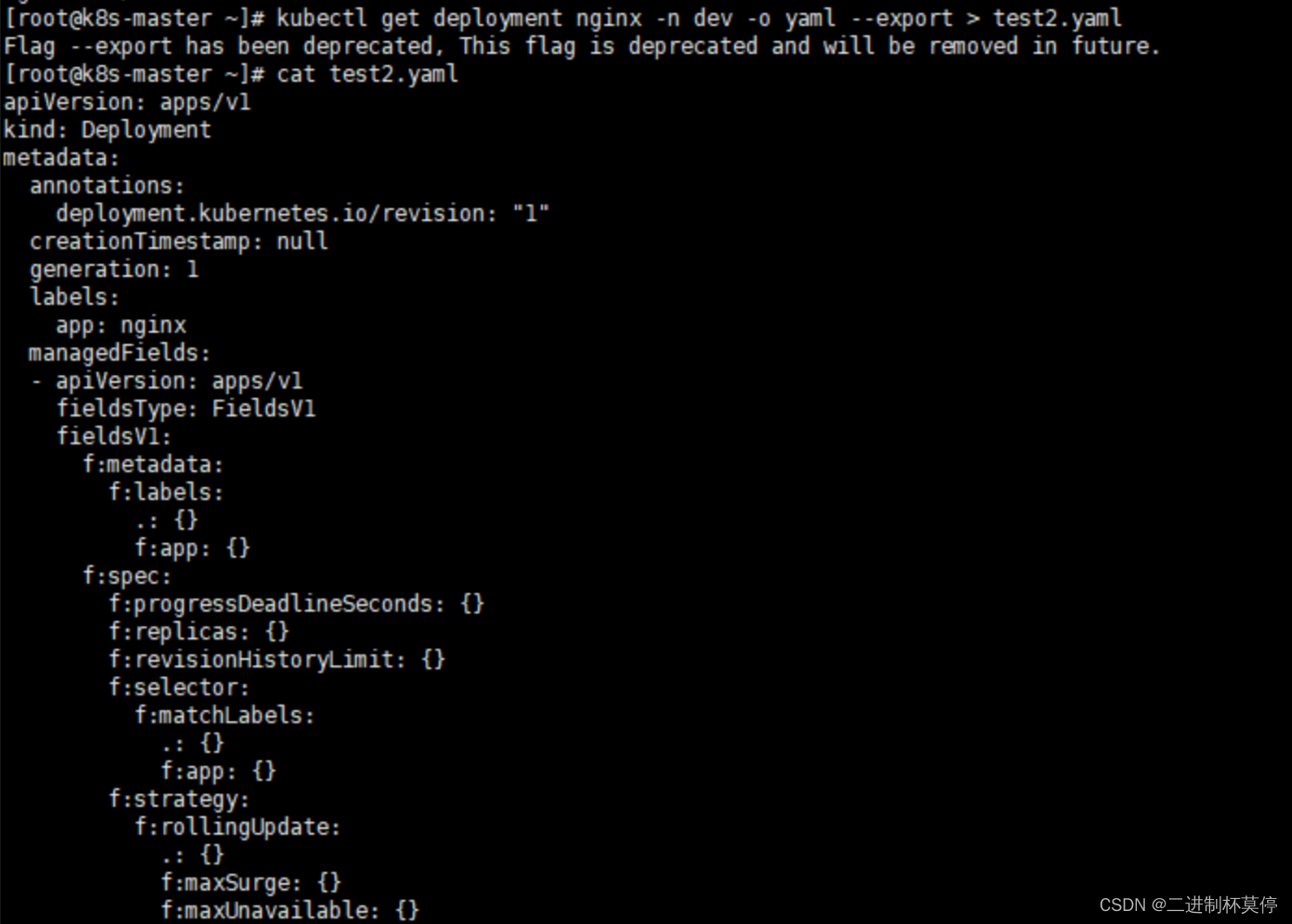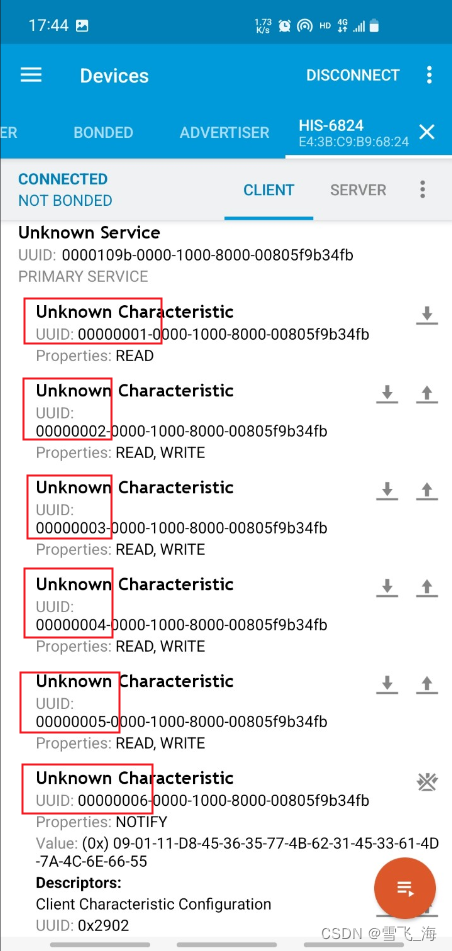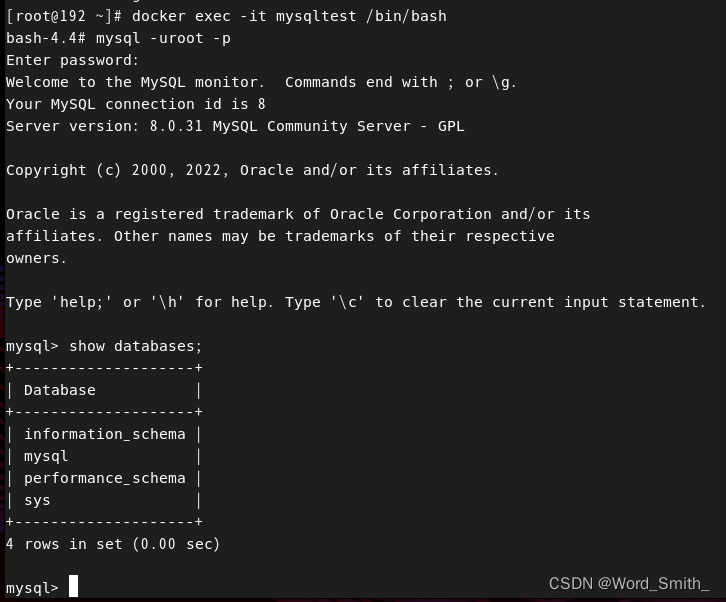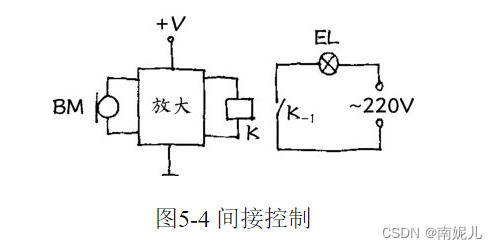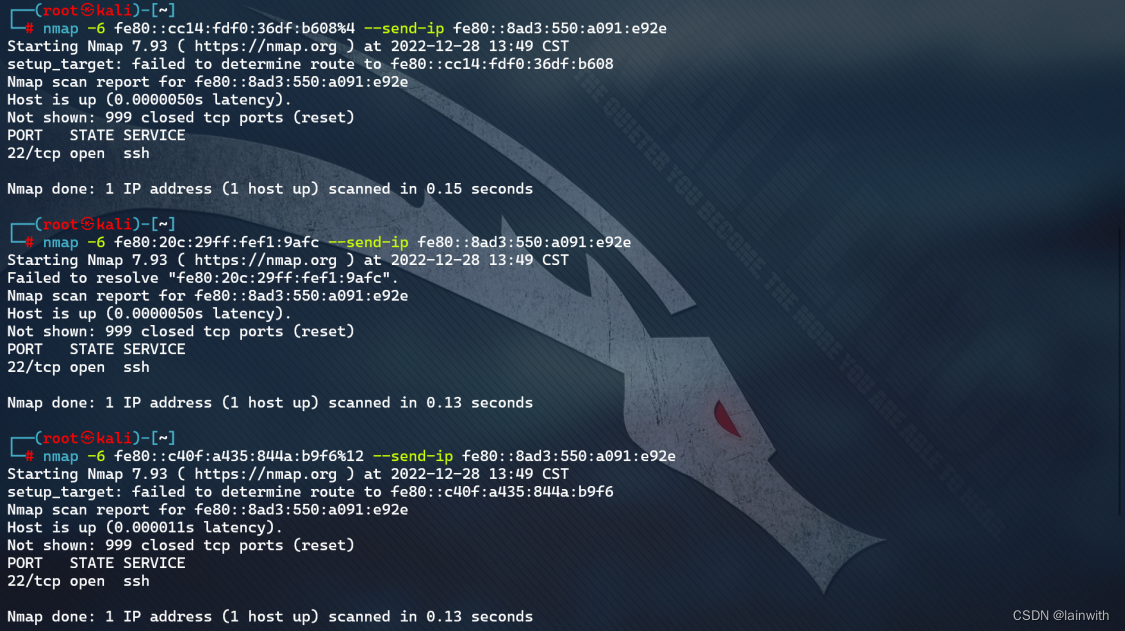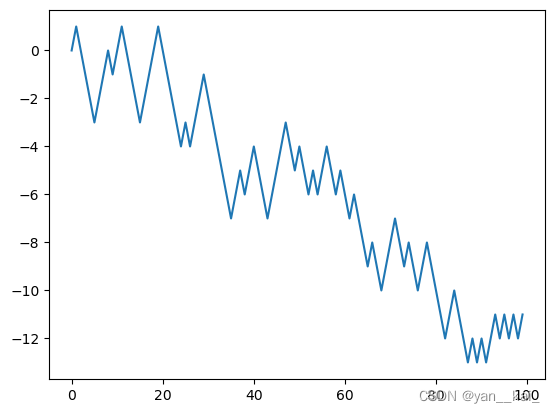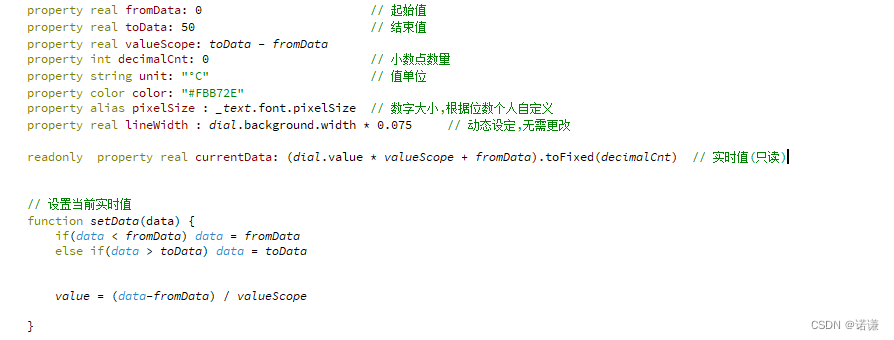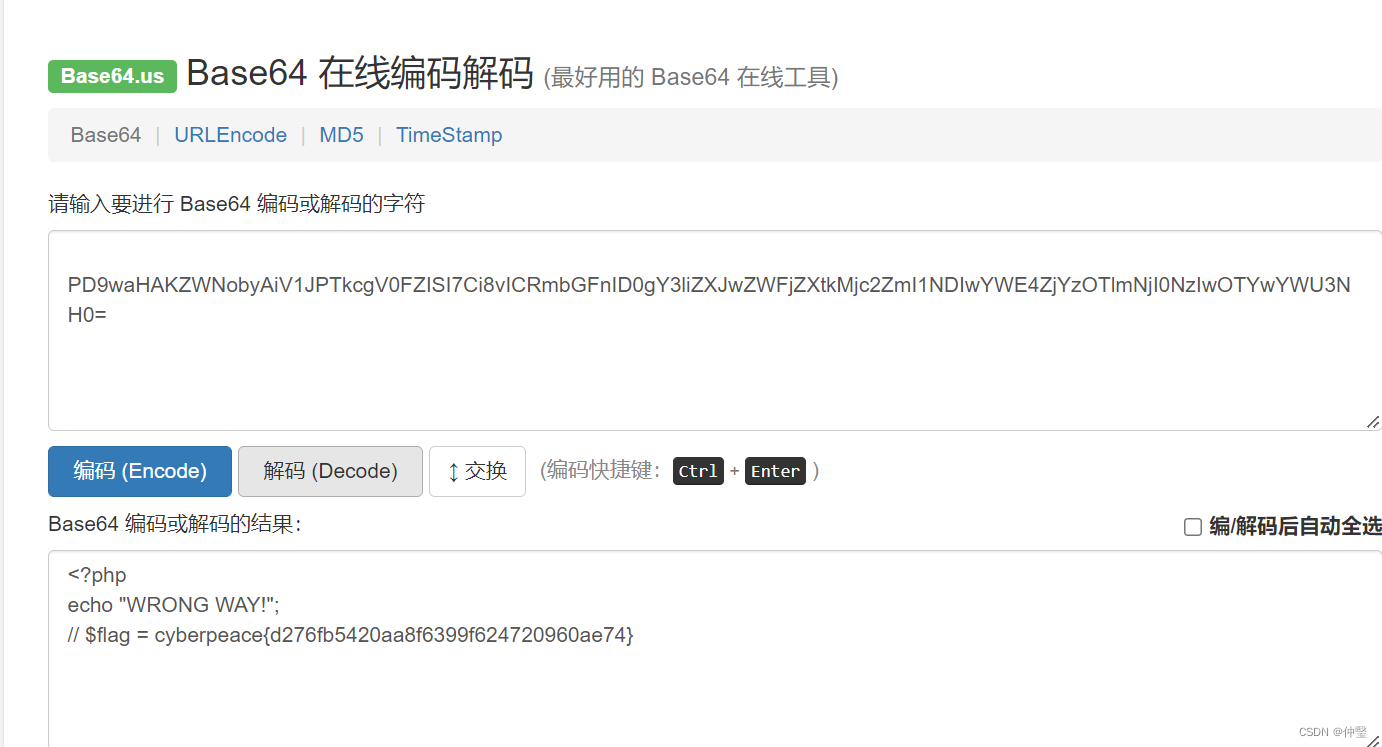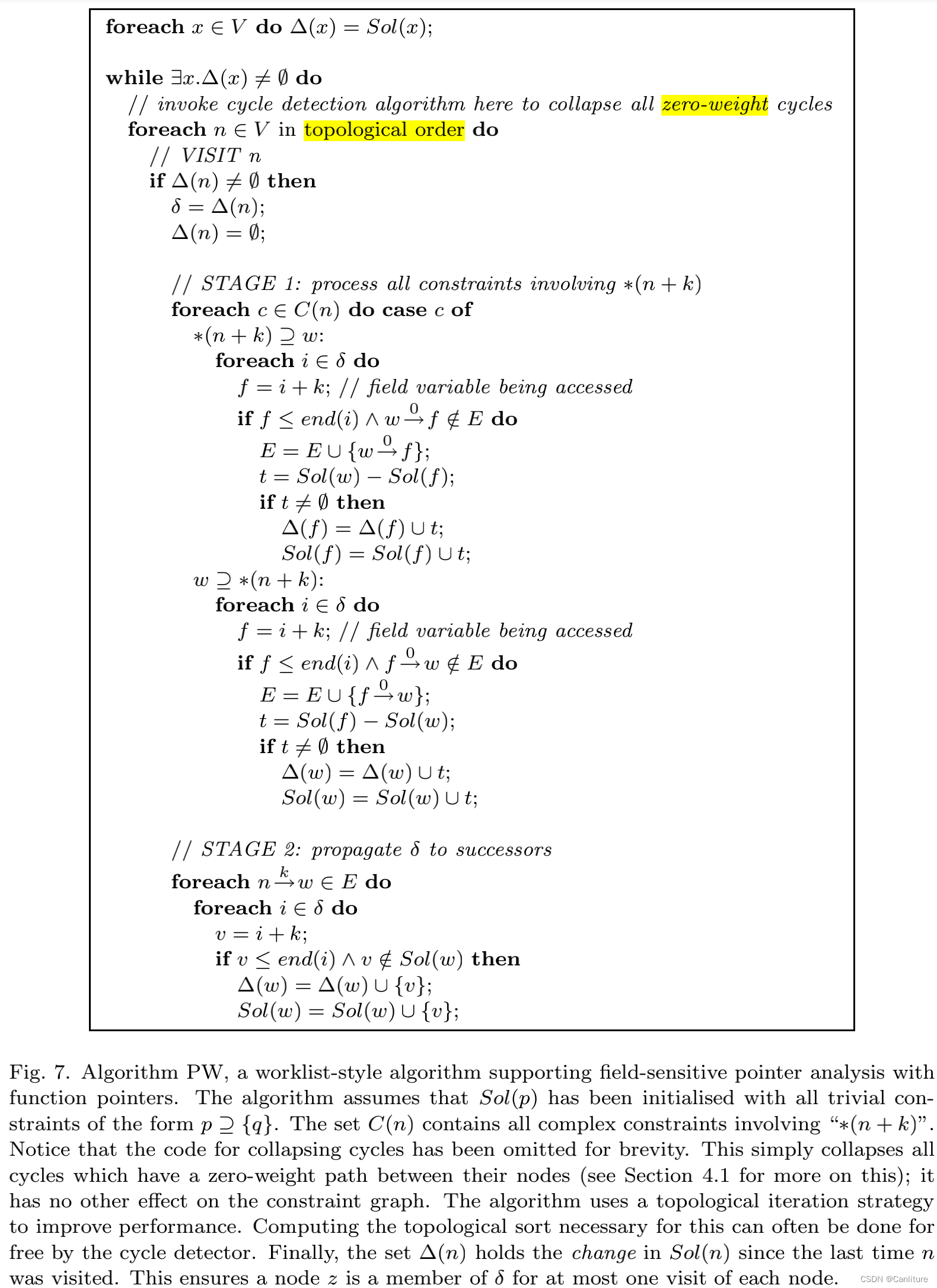进程四要素
- 有一段程序代其执行
- 有进程专用的系统堆栈空间
- 在内核有task_struct数据结构
- 进程有独立的存储空间,拥有专有的用户空间
如果具备前三点缺少第四条,称为“线程”;如果完全没有用户空间,称为“内核线程”;如果共享用户空间,称为“用户线程”。
进程生命周期
- 运行
- 等待:可以运行,没有得到许可。调度器可以在下一个任务切换时选择该进程。
- 睡眠:等待一个外部事件。
- 转换关系:

内核资料直通车:最新Linux内核源码资料文档+视频资料
学习直通车:Linux内核源码/内存调优/文件系统/进程管理/设备驱动/网络协议栈
task_struct数据结构
进程描述task_struct数据结构
struct task_struct {
// 进程状态
volatile long state; /* -1 unrunnable, 0 runnable, >0 stopped */
void *stack; // 指向内核栈指针
atomic_t usage; // 有几个进程使用此结构
unsigned int flags; /* per process flags, defined below */
unsigned int ptrace; // ptrace系统调用 实现断点调试 跟踪进程运行
// 条件编译多处理器用到
#ifdef CONFIG_SMP
struct llist_node wake_entry;
int on_cpu;
unsigned int wakee_flips;
unsigned long wakee_flip_decay_ts;
struct task_struct *last_wakee;
int wake_cpu;
#endif
// 运行队列和进程调试相关程序
int on_rq;
int prio, static_prio, normal_prio; //关于进程调试
unsigned int rt_priority; //优先级
// 关于进程
const struct sched_class *sched_class;
struct sched_entity se;
struct sched_rt_entity rt;
// 结构体链表
#ifdef CONFIG_CGROUP_SCHED
struct task_group *sched_task_group;
#endif
struct sched_dl_entity dl;
#ifdef CONFIG_PREEMPT_NOTIFIERS
/* list of struct preempt_notifier: */
struct hlist_head preempt_notifiers;
#endif
// 块设备I/O的跟踪工具
#ifdef CONFIG_BLK_DEV_IO_TRACE
unsigned int btrace_seq;
#endif
// 进程调试策略相关的字段
unsigned int policy;
int nr_cpus_allowed;
cpumask_t cpus_allowed;
// RCU同步原语
#ifdef CONFIG_PREEMPT_RCU
int rcu_read_lock_nesting;
union rcu_special rcu_read_unlock_special;
struct list_head rcu_node_entry;
struct rcu_node *rcu_blocked_node;
#endif /* #ifdef CONFIG_PREEMPT_RCU */
#ifdef CONFIG_TASKS_RCU
unsigned long rcu_tasks_nvcsw;
bool rcu_tasks_holdout;
struct list_head rcu_tasks_holdout_list;
int rcu_tasks_idle_cpu;
#endif /* #ifdef CONFIG_TASKS_RCU */
#ifdef CONFIG_SCHED_INFO
struct sched_info sched_info;
#endif
//进程链表架构
struct list_head tasks;
#ifdef CONFIG_SMP
struct plist_node pushable_tasks;
struct rb_node pushable_dl_tasks;
#endif
// 进程管理地址空间,每个进程有独立的地址空间4G
struct mm_struct *mm, *active_mm;
/* per-thread vma caching */
u32 vmacache_seqnum;
struct vm_area_struct *vmacache[VMACACHE_SIZE];
#if defined(SPLIT_RSS_COUNTING)
struct task_rss_stat rss_stat;
#endif
// 进程状态参数
/* task state */
int exit_state;
int exit_code, exit_signal;
// 接收父进程终止时就会发出信号
int pdeath_signal; /* The signal sent when the parent dies */
unsigned long jobctl; /* JOBCTL_*, siglock protected */
/* Used for emulating ABI behavior of previous Linux versions */
unsigned int personality;
/* scheduler bits, serialized by scheduler locks */
unsigned sched_reset_on_fork:1;
unsigned sched_contributes_to_load:1;
unsigned sched_migrated:1;
unsigned :0; /* force alignment to the next boundary */
/* unserialized, strictly 'current' */
unsigned in_execve:1; /* bit to tell LSMs we're in execve */
unsigned in_iowait:1;
#ifdef CONFIG_MEMCG
unsigned memcg_may_oom:1;
#endif
#ifdef CONFIG_MEMCG_KMEM
unsigned memcg_kmem_skip_account:1;
#endif
#ifdef CONFIG_COMPAT_BRK
unsigned brk_randomized:1;
#endif
unsigned long atomic_flags; /* Flags needing atomic access. */
struct restart_block restart_block;
// 进程pid, 父进程tgid
pid_t pid;
pid_t tgid;
// 防止内核堆栈溢出
#ifdef CONFIG_CC_STACKPROTECTOR
/* Canary value for the -fstack-protector gcc feature */
unsigned long stack_canary;
#endif
/*
* pointers to (original) parent process, youngest child, younger sibling,
* older sibling, respectively. (p->father can be replaced with
* p->real_parent->pid)
*/
// 初始化父进程
struct task_struct __rcu *real_parent; /* real parent process */
// 接收中止进程
struct task_struct __rcu *parent; /* recipient of SIGCHLD, wait4() reports */
/*
* children/sibling forms the list of my natural children
*/
// 维护子进程链表
struct list_head children; /* list of my children */
// 兄弟进程链表
struct list_head sibling; /* linkage in my parent's children list */
struct task_struct *group_leader; /* threadgroup leader */
/*
* ptraced is the list of tasks this task is using ptrace on.
* This includes both natural children and PTRACE_ATTACH targets.
* p->ptrace_entry is p's link on the p->parent->ptraced list.
*/
// 系统调用 关于断开调试
struct list_head ptraced;
struct list_head ptrace_entry;
/* PID/PID hash table linkage. */
// 散列表的关系
struct pid_link pids[PIDTYPE_MAX];
struct list_head thread_group;
struct list_head thread_node;
// do_fork()函数
struct completion *vfork_done; /* for vfork() */
int __user *set_child_tid; /* CLONE_CHILD_SETTID */
int __user *clear_child_tid; /* CLONE_CHILD_CLEARTID */
// 描述CPU时间的内容
// utime 用户态下的执行时间
// stime 内核态的执行时间
cputime_t utime, stime, utimescaled, stimescaled;
cputime_t gtime;
struct prev_cputime prev_cputime;
#ifdef CONFIG_VIRT_CPU_ACCOUNTING_GEN
seqlock_t vtime_seqlock;
unsigned long long vtime_snap;
enum {
VTIME_SLEEPING = 0,
VTIME_USER,
VTIME_SYS,
} vtime_snap_whence;
#endif
unsigned long nvcsw, nivcsw; /* context switch counts */
u64 start_time; /* monotonic time in nsec */
u64 real_start_time; /* boot based time in nsec */
/* mm fault and swap info: this can arguably be seen as either mm-specific or thread-specific */
unsigned long min_flt, maj_flt;
struct task_cputime cputime_expires;
struct list_head cpu_timers[3];
/* process credentials */
const struct cred __rcu *real_cred; /* objective and real subjective task
* credentials (COW) */
const struct cred __rcu *cred; /* effective (overridable) subjective task
* credentials (COW) */
char comm[TASK_COMM_LEN]; /* executable name excluding path
- access with [gs]et_task_comm (which lock
it with task_lock())
- initialized normally by setup_new_exec */
/* file system info */
struct nameidata *nameidata;
#ifdef CONFIG_SYSVIPC
/* ipc stuff */
struct sysv_sem sysvsem;
struct sysv_shm sysvshm;
#endif
#ifdef CONFIG_DETECT_HUNG_TASK
/* hung task detection */
unsigned long last_switch_count;
#endif
/* filesystem information */
struct fs_struct *fs;
/* open file information */
struct files_struct *files;
/* namespaces */
struct nsproxy *nsproxy;
/* signal handlers */
struct signal_struct *signal;
struct sighand_struct *sighand;
sigset_t blocked, real_blocked;
sigset_t saved_sigmask; /* restored if set_restore_sigmask() was used */
struct sigpending pending;
unsigned long sas_ss_sp;
size_t sas_ss_size;
struct callback_head *task_works;
struct audit_context *audit_context;
#ifdef CONFIG_AUDITSYSCALL
kuid_t loginuid;
unsigned int sessionid;
#endif
struct seccomp seccomp;
/* Thread group tracking */
u32 parent_exec_id;
u32 self_exec_id;
/* Protection of (de-)allocation: mm, files, fs, tty, keyrings, mems_allowed,
* mempolicy */
spinlock_t alloc_lock;
/* Protection of the PI data structures: */
raw_spinlock_t pi_lock;
struct wake_q_node wake_q;
#ifdef CONFIG_RT_MUTEXES
/* PI waiters blocked on a rt_mutex held by this task */
struct rb_root pi_waiters;
struct rb_node *pi_waiters_leftmost;
/* Deadlock detection and priority inheritance handling */
struct rt_mutex_waiter *pi_blocked_on;
#endif
#ifdef CONFIG_DEBUG_MUTEXES
/* mutex deadlock detection */
struct mutex_waiter *blocked_on;
#endif
#ifdef CONFIG_TRACE_IRQFLAGS
unsigned int irq_events;
unsigned long hardirq_enable_ip;
unsigned long hardirq_disable_ip;
unsigned int hardirq_enable_event;
unsigned int hardirq_disable_event;
int hardirqs_enabled;
int hardirq_context;
unsigned long softirq_disable_ip;
unsigned long softirq_enable_ip;
unsigned int softirq_disable_event;
unsigned int softirq_enable_event;
int softirqs_enabled;
int softirq_context;
#endif
#ifdef CONFIG_LOCKDEP
# define MAX_LOCK_DEPTH 48UL
u64 curr_chain_key;
int lockdep_depth;
unsigned int lockdep_recursion;
struct held_lock held_locks[MAX_LOCK_DEPTH];
gfp_t lockdep_reclaim_gfp;
#endif
/* journalling filesystem info */
void *journal_info;
/* stacked block device info */
struct bio_list *bio_list;
#ifdef CONFIG_BLOCK
/* stack plugging */
struct blk_plug *plug;
#endif
/* VM state */
// 虚拟内存状态参数 内存回收
struct reclaim_state *reclaim_state;
// 存放块设备I/O流量信息
struct backing_dev_info *backing_dev_info;
// I/O调度器所用的信息
struct io_context *io_context;
unsigned long ptrace_message;
siginfo_t *last_siginfo; /* For ptrace use. */
struct task_io_accounting ioac;
#if defined(CONFIG_TASK_XACCT)
u64 acct_rss_mem1; /* accumulated rss usage */
u64 acct_vm_mem1; /* accumulated virtual memory usage */
cputime_t acct_timexpd; /* stime + utime since last update */
#endif
#ifdef CONFIG_CPUSETS
nodemask_t mems_allowed; /* Protected by alloc_lock */
seqcount_t mems_allowed_seq; /* Seqence no to catch updates */
int cpuset_mem_spread_rotor;
int cpuset_slab_spread_rotor;
#endif
#ifdef CONFIG_CGROUPS
/* Control Group info protected by css_set_lock */
struct css_set __rcu *cgroups;
/* cg_list protected by css_set_lock and tsk->alloc_lock */
struct list_head cg_list;
#endif
#ifdef CONFIG_FUTEX
struct robust_list_head __user *robust_list;
#ifdef CONFIG_COMPAT
struct compat_robust_list_head __user *compat_robust_list;
#endif
struct list_head pi_state_list;
struct futex_pi_state *pi_state_cache;
#endif
// 内存检测工具
#ifdef CONFIG_PERF_EVENTS
struct perf_event_context *perf_event_ctxp[perf_nr_task_contexts];
struct mutex perf_event_mutex;
struct list_head perf_event_list;
#endif
#ifdef CONFIG_DEBUG_PREEMPT
unsigned long preempt_disable_ip;
#endif
#ifdef CONFIG_NUMA
struct mempolicy *mempolicy; /* Protected by alloc_lock */
short il_next;
short pref_node_fork;
#endif
#ifdef CONFIG_NUMA_BALANCING
int numa_scan_seq;
unsigned int numa_scan_period;
unsigned int numa_scan_period_max;
int numa_preferred_nid;
unsigned long numa_migrate_retry;
u64 node_stamp; /* migration stamp */
u64 last_task_numa_placement;
u64 last_sum_exec_runtime;
struct callback_head numa_work;
struct list_head numa_entry;
struct numa_group *numa_group;
/*
* numa_faults is an array split into four regions:
* faults_memory, faults_cpu, faults_memory_buffer, faults_cpu_buffer
* in this precise order.
*
* faults_memory: Exponential decaying average of faults on a per-node
* basis. Scheduling placement decisions are made based on these
* counts. The values remain static for the duration of a PTE scan.
* faults_cpu: Track the nodes the process was running on when a NUMA
* hinting fault was incurred.
* faults_memory_buffer and faults_cpu_buffer: Record faults per node
* during the current scan window. When the scan completes, the counts
* in faults_memory and faults_cpu decay and these values are copied.
*/
unsigned long *numa_faults;
unsigned long total_numa_faults;
/*
* numa_faults_locality tracks if faults recorded during the last
* scan window were remote/local or failed to migrate. The task scan
* period is adapted based on the locality of the faults with different
* weights depending on whether they were shared or private faults
*/
unsigned long numa_faults_locality[3];
unsigned long numa_pages_migrated;
#endif /* CONFIG_NUMA_BALANCING */
#ifdef CONFIG_ARCH_WANT_BATCHED_UNMAP_TLB_FLUSH
struct tlbflush_unmap_batch tlb_ubc;
#endif
struct rcu_head rcu;
/*
* cache last used pipe for splice
*/
struct pipe_inode_info *splice_pipe; //管道
struct page_frag task_frag;
// 延迟计数
#ifdef CONFIG_TASK_DELAY_ACCT
struct task_delay_info *delays;
#endif
#ifdef CONFIG_FAULT_INJECTION
int make_it_fail;
#endif进程优先级
- 实时进程 非实时进程(普通进程)
实时进程优先级(0-99)比普通进程的优先级高(100-139)高。当系统中有实时进程运行时,普通进程几乎无法分到时间片(只能分到5%的CPU时间)。

进程系统调用

进程复制
- fork是重量级调用,因为它建立了父进程的一个完整副本,然后作为子进程执行。 为减少与该调用相关的工作量,Linux使用了写时复制(copy-on-write)技术。
- vfork类似于fork,但并不创建父进程数据的副本。相反,父子进程之间共享数据。 这节省了大量CPU时间(如果一个进程操纵共享数据,则另一个会自动注意到)。
- clone产生线程,可以对父子进程之间的共享、复制进行精确控制
写时复制(Copy On Write)
内核使用了写时复制(Copy-On-Write,COW)技术,以防止在fork执行时将父进程的所有数据 复制到子进程。在调用fork时,内核通常对父进程的每个内存页,都为子进程创建一个相同的副本。

问题:主进程修改页z的数据,此时会发生父子进程在内存分离。

只有在不得不复制数据内容时采取复制数据内容,这就是写时复制的核心思想,可以看到因为修改页z导致子进程不得不去复制原来页z来保证父子进程互不干扰。
内核只为新生成的子进程创建虚拟空间结构,它们来复制父进程的虚拟结构,但是不为这些结构分配物理内存,它们共享父进程的物理空间,父进程有更改相应段的行为发生时,再为子进程相应段分配物理空间。
内核线程
内核线程是直接由内核本身启动的进程。内核线程实际上是将内核函数委托给独立的 进程,与系统中其他进程“并行”执行(实际上,也并不等于内核自身的执行)。内核线程经常 称之为(内核)守护进程。它们用于执行下列任务。
- 周期性地将修改的内存页与页来源块设备同步(例如,使用mmap的文件映射)。
- 如果内存页很少使用,则写入交换区。
- 管理延时动作(deferred action)。
- 实现文件系统的事务日志。
进程退出
进程必须用exit系统调用终止。这使得内核有机会将该进程使用的资源释放回系统。见kernel/exit.c------>do_exit。简而言之, 该函数的实现就是将各个引用计数器减1,如果引用计数器归0而没有进程再使用对应的结构,那么将相应的内存区域返还给内存管理模块
void do_exit(long code)
{
struct task_struct *tsk = current;
int group_dead;
TASKS_RCU(int tasks_rcu_i);
profile_task_exit(tsk);
WARN_ON(blk_needs_flush_plug(tsk));
if (unlikely(in_interrupt()))
panic("Aiee, killing interrupt handler!");
if (unlikely(!tsk->pid))
panic("Attempted to kill the idle task!");
/*
* If do_exit is called because this processes oopsed, it's possible
* that get_fs() was left as KERNEL_DS, so reset it to USER_DS before
* continuing. Amongst other possible reasons, this is to prevent
* mm_release()->clear_child_tid() from writing to a user-controlled
* kernel address.
*/
set_fs(USER_DS);
ptrace_event(PTRACE_EVENT_EXIT, code);
validate_creds_for_do_exit(tsk);
/*
* We're taking recursive faults here in do_exit. Safest is to just
* leave this task alone and wait for reboot.
*/
if (unlikely(tsk->flags & PF_EXITING)) {
pr_alert("Fixing recursive fault but reboot is needed!\n");
/*
* We can do this unlocked here. The futex code uses
* this flag just to verify whether the pi state
* cleanup has been done or not. In the worst case it
* loops once more. We pretend that the cleanup was
* done as there is no way to return. Either the
* OWNER_DIED bit is set by now or we push the blocked
* task into the wait for ever nirwana as well.
*/
tsk->flags |= PF_EXITPIDONE;
set_current_state(TASK_UNINTERRUPTIBLE);
schedule();
}
exit_signals(tsk); /* sets PF_EXITING */
/*
* tsk->flags are checked in the futex code to protect against
* an exiting task cleaning up the robust pi futexes.
*/
smp_mb();
raw_spin_unlock_wait(&tsk->pi_lock);
if (unlikely(in_atomic())) {
pr_info("note: %s[%d] exited with preempt_count %d\n",
current->comm, task_pid_nr(current),
preempt_count());
preempt_count_set(PREEMPT_ENABLED);
}
/* sync mm's RSS info before statistics gathering */
if (tsk->mm)
sync_mm_rss(tsk->mm);
acct_update_integrals(tsk);
group_dead = atomic_dec_and_test(&tsk->signal->live);
if (group_dead) {
hrtimer_cancel(&tsk->signal->real_timer);
exit_itimers(tsk->signal);
if (tsk->mm)
setmax_mm_hiwater_rss(&tsk->signal->maxrss, tsk->mm);
}
acct_collect(code, group_dead);
if (group_dead)
tty_audit_exit();
audit_free(tsk);
tsk->exit_code = code;
taskstats_exit(tsk, group_dead);
exit_mm(tsk);
if (group_dead)
acct_process();
trace_sched_process_exit(tsk);
exit_sem(tsk);
exit_shm(tsk);
exit_files(tsk);
exit_fs(tsk);
if (group_dead)
disassociate_ctty(1);
exit_task_namespaces(tsk);
exit_task_work(tsk);
exit_thread();
/*
* Flush inherited counters to the parent - before the parent
* gets woken up by child-exit notifications.
*
* because of cgroup mode, must be called before cgroup_exit()
*/
perf_event_exit_task(tsk);
cgroup_exit(tsk);
/*
* FIXME: do that only when needed, using sched_exit tracepoint
*/
flush_ptrace_hw_breakpoint(tsk);
TASKS_RCU(preempt_disable());
TASKS_RCU(tasks_rcu_i = __srcu_read_lock(&tasks_rcu_exit_srcu));
TASKS_RCU(preempt_enable());
exit_notify(tsk, group_dead);
proc_exit_connector(tsk);
#ifdef CONFIG_NUMA
task_lock(tsk);
mpol_put(tsk->mempolicy);
tsk->mempolicy = NULL;
task_unlock(tsk);
#endif
#ifdef CONFIG_FUTEX
if (unlikely(current->pi_state_cache))
kfree(current->pi_state_cache);
#endif
/*
* Make sure we are holding no locks:
*/
debug_check_no_locks_held();
/*
* We can do this unlocked here. The futex code uses this flag
* just to verify whether the pi state cleanup has been done
* or not. In the worst case it loops once more.
*/
tsk->flags |= PF_EXITPIDONE;
if (tsk->io_context)
exit_io_context(tsk);
if (tsk->splice_pipe)
free_pipe_info(tsk->splice_pipe);
if (tsk->task_frag.page)
put_page(tsk->task_frag.page);
validate_creds_for_do_exit(tsk);
check_stack_usage();
preempt_disable();
if (tsk->nr_dirtied)
__this_cpu_add(dirty_throttle_leaks, tsk->nr_dirtied);
exit_rcu();
TASKS_RCU(__srcu_read_unlock(&tasks_rcu_exit_srcu, tasks_rcu_i));
/*
* The setting of TASK_RUNNING by try_to_wake_up() may be delayed
* when the following two conditions become true.
* - There is race condition of mmap_sem (It is acquired by
* exit_mm()), and
* - SMI occurs before setting TASK_RUNINNG.
* (or hypervisor of virtual machine switches to other guest)
* As a result, we may become TASK_RUNNING after becoming TASK_DEAD
*
* To avoid it, we have to wait for releasing tsk->pi_lock which
* is held by try_to_wake_up()
*/
smp_mb();
raw_spin_unlock_wait(&tsk->pi_lock);
/* causes final put_task_struct in finish_task_switch(). */
tsk->state = TASK_DEAD;
tsk->flags |= PF_NOFREEZE; /* tell freezer to ignore us */
schedule();
BUG();
/* Avoid "noreturn function does return". */
for (;;)
cpu_relax(); /* For when BUG is null */
}总结
本文介绍了进程四要素、进程生命周期,列举了task_struct数据结构的主要内容,系统调用写时复制思想,守护进程,进程退出原理等内容。


